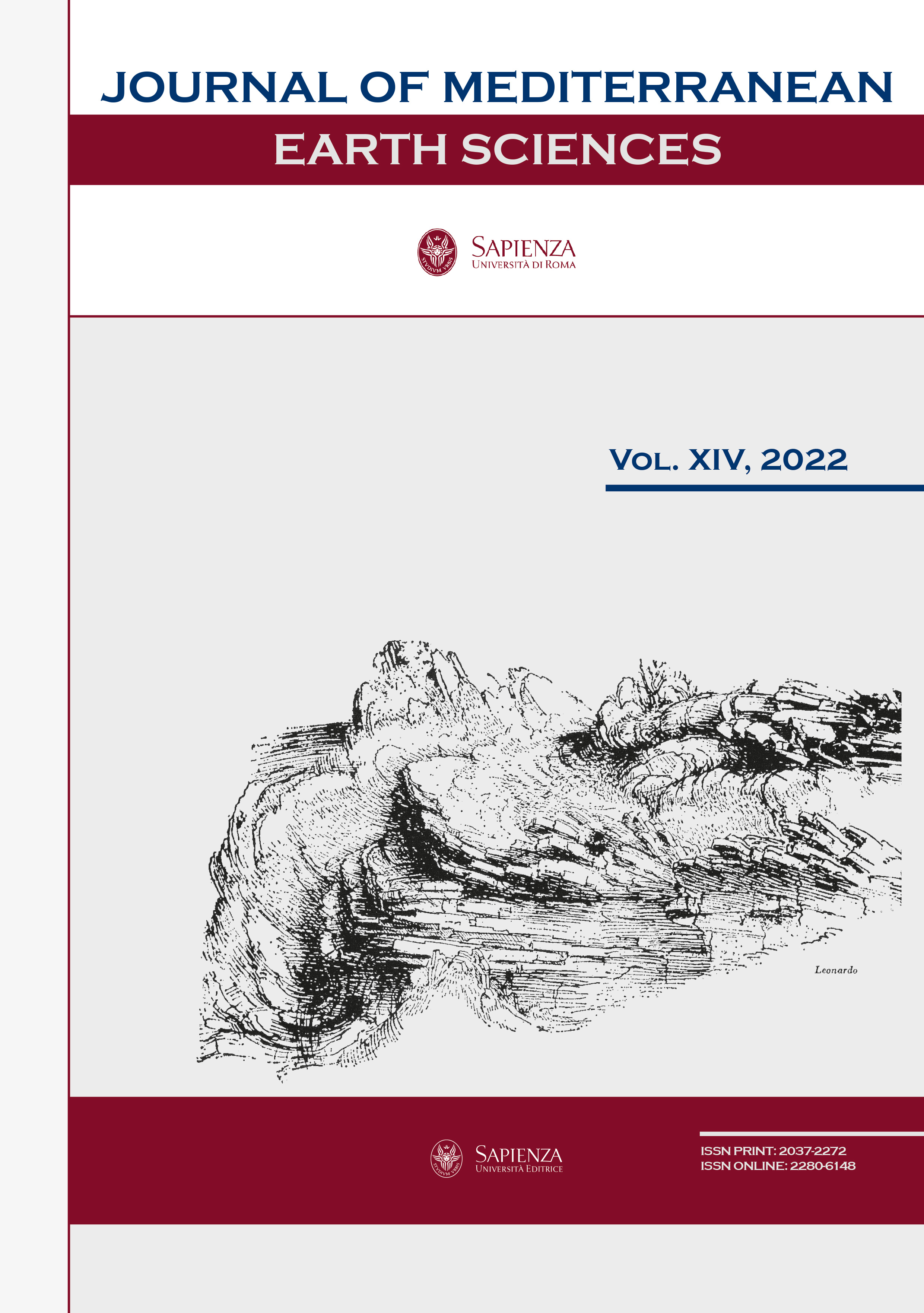Depositional setting, paleogeography, and sequence stratigraphy of the Salento Peninsula from the Paleogene to the Pleistocene
DOI:
https://doi.org/10.13133/2280-6148/17924Abstract
The Salento Peninsula constitutes an outcropping portion of the Apulia Carbonate Platform that was investigated through field analysis and a database of 350 wells in order to construct correlation panels and define paleogeographic schemes of this area during the Paleogene and Neogene. The Salento Peninsula constitutes the foreland sector of two chain belts migrating in opposite directions (the Dinarides-Albanides-Hellenides chain moving from NE to SW and the southern Apennines chain moving from SW to NE) whose movements influenced the carbonate sedimentation and paleogeographic evolution of this area during the Cenozoic. The analyzed stratigraphic succession is constituted by shallow-water carbonate sediments that were essentially deposited along reef complexes and variously articulated homoclinal ramps. These environments developed mainly along the eastern margin of the Peninsula and under the influence of the tectonic uplift/subsidence and eustatic sea level changes. In this paper we propose several paleogeographic schemes of the area and discuss how the interference between the two migrating chains, together with the eustatic sea-level changes influenced the Cenozoic stratigraphic organization of the Salento Peninsula.
Starting from the end of the Cretaceous the Salento area experienced uplift and erosion related to the flexural bending of the subducting lithosphere under the Dinarides-Albanides- Ellenides and southern Apennines belts respectively. This process produced an initial extensional fracturing and faulting in the uppermost part of the lithosphere during the Paleocene-early Eocene and an interruption of the shallow-water carbonate deposition; the latter was re-established starting from the middle-late Eocene up to the Pleistocene, with the onset of flexural subsidence, that became more accentuated during the Miocene. This process together with the eustatic sea-level variations induced by the Cenozoic climatic changes conditioned the carbonate sedimentation that is characterized by formal and informal lithostratigraphic units bounding by several unconformity surfaces constituting the expression of complete and incomplete simple and composite low and high rank depositional sequences.
Downloads
Published
How to Cite
Issue
Section
License
The submission has not been previously published, nor is it before another journal for consideration (or an explanation has been provided in Comments to the Editor).


